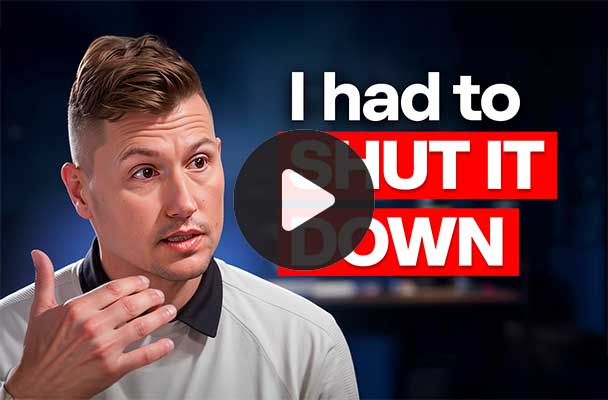
Statistics on Veterans Transitioning to Civilian Life
Leaving the military can be one of the biggest adjustments in a veteran’s life. Existing statistics on veterans transitioning to civilian life tell us that each year, more than 200,000 service members transition out of uniform and into civilian life. For many, that shift brings new opportunities along with real challenges: financial, emotional, and practical.
These numbers in this report don’t tell one story of success or struggle. They show a full picture of where veterans stand and what patterns emerge as they adjust to civilian life.
Transition Outcomes Overview
Of the 200,000 or so military personnel who transition to civilian life every year, most are enlisted personnel in their 20s and 30s. Conversely, officers typically separate later with more education and leadership experience.
Transition Assistance Program (TAP) participation:
- 85%+ of separating service members attend at least one Transition Assistance Program (TAP) workshop.
- About 50% report feeling fully prepared for civilian life.
The statistics on veterans transitioning to civilian life indicate that planning and preparation can significantly ease the transition and enhance a veteran’s civilian life. Veterans who use TAP resources, manage finances early, and pursue education tend to reach stability faster and report higher satisfaction after separation.
Employment Statistics
Employment is one of the most important measures of a successful transition. While most veterans find work within a year, many face underemployment or take jobs below their skill level during the first few months.
Veteran Employment Outcomes
|
Time after separation |
Employment rate |
Underemployment rate |
Median income compared to civilian income |
Notes |
|---|---|---|---|---|
|
6 Months |
~60% |
~30% |
Slightly lower |
Many are in part-time or temporary work. |
|
1 Year |
~75% |
~22% |
Near parity |
Job stability improves after a year, but wage growth is slower. |
|
2 Years |
~83% |
~18% |
Equal or slightly higher |
Career advancement and degree completion boost outcomes. |
Most veterans find civilian jobs in logistics, IT, law enforcement, skilled trades, or healthcare. These industries value military experience and teamwork skills. Programs like SkillBridge and Helmets to Hardhats help veterans connect with employers before leaving the service.
Education matters. Veterans with degrees or certifications have 10 to 15 percent higher employment rates and faster income recovery. Female veterans face higher underemployment, often due to caregiving or limited flexible jobs, but mentorship and VA career services help close the gap.
These statistics on veterans transitioning to civilian life show that education, early planning, and job readiness training lead to stronger long-term outcomes.
Financial Stability and Debt Patterns
Many veterans face short-term financial strain post-separation before stabilization.
Table: Post-Separation Financial Health Indicators
|
Timeframe |
Common Financial Trends |
Notes |
|---|---|---|
|
0–6 Months |
Credit card and auto loan balances rise |
Linked to relocation and transition expenses. |
|
6–12 Months |
Greater reliance on GI Bill and VA benefits |
Provides temporary stability during career shifts or schooling. |
|
1–2 Years |
Debt levels decline, credit scores improve |
Consistent income and budgeting lead to recovery. |
Veterans who engage in financial education and transition readiness programs show better long-term financial outcomes (including stronger credit metrics, fewer late payments, and improved debt management capability) than those who do not. Research indicates that baseline financial skills at separation predict outcomes nearly three years later.
Housing and Relocation Challenges
Housing plays a major role in stability during the first years of transition. Younger veterans and those relocating after service often face steep costs before settling.
- Recent veterans have lower homeownership rates than older veteran cohorts, with veterans under age 45 significantly less likely to own homes compared to those over 45.
- About 35% of post-9/11 veterans are “cost-burdened,” spending more than 30% of their income on housing, with rent taking a larger share in high-cost urban areas.
- Veterans with families experience greater strain from relocation costs, childcare expenses, and career mismatches that delay financial stability.
- The likelihood of homelessness drops sharply after two years, once employment and benefits are established.
Adjustment and Wellbeing Indicators
The emotional side of transition is just as real as the financial one. Even with good preparation, many veterans report difficulty finding their footing after service.
- 48% say they had trouble finding purpose within the first year.
- 35% experience anxiety tied to career uncertainty or loss of structure.
- 1 in 4 report trouble translating military skills to civilian resumes.
- Those who connect with VA or nonprofit career services within six months show higher employment satisfaction and better well-being scores.
These numbers remind us that transition success involves more than a job title. It’s also about finding an identity beyond military service, building confidence, and cultivating a supportive community.
Demographic and Service-Based Differences
|
Category |
Distinct Trends |
What This Tells Us |
|---|---|---|
|
Enlisted vs. Officers |
Officers report higher initial salaries and faster re-employment. |
Education and leadership experience give them an edge. |
|
Gender |
Female veterans face added caregiving responsibilities and relocation barriers. |
This contributes to slower income recovery. |
|
Era |
Post-9/11 veterans report more stress but also greater access to benefits. |
Modern programs and outreach improve results. |
|
Education Level |
Higher education directly correlates with stronger income stability. |
GI Bill use remains one of the most effective financial tools. |
Practical Takeaways for Veterans
Transition success often comes down to preparation and steady planning.
- Build an emergency fund before separating: A 3–6 month cushion helps cover income gaps.
- Use every part of TAP: Resume writing, budgeting, and job search support are proven to help within the first two years.
- Stay organized with benefits: Apply early for GI Bill, disability, or home loan programs to prevent delays.
- Get help if debt builds up: The VA Debt Management Center can provide hardship relief or repayment options.
No one’s transition looks exactly the same. The key is to plan early, use the tools available, and stay proactive when challenges come up. The data shows that when veterans prepare ahead, they build stability faster and carry that progress for years to come.
FAQ
Q. What percentage of separating service members report being fully prepared for civilian life?
A, Only about half of recently separated service members say they felt “well prepared” for the transition, according to DoD TAP survey data.
Q. How long does it usually take veterans to find steady employment after separation?
A. Most veterans secure stable, full-time employment within 12 to 18 months, though underemployment remains common during that first year.
Q. What is the average income difference between recently separated veterans and civilians?
A. In the first year after separation, veterans earn roughly 5–10% less than civilians of similar age and education, but this gap typically closes within two years.
Q. What is the average income difference between recently separated veterans and civilians?
A, In the first year after separation, veterans earn roughly 5–10% less than civilians of similar age and education, but this gap typically closes within two years.
Q. What percentage of veterans experience financial hardship within the first year after leaving service?
A. Roughly one in three veterans reports moderate or severe financial stress during their first year, primarily tied to relocation costs, benefit delays, or lost allowances.
Q. How many veterans use their GI Bill benefits within two years of leaving the military?
A. The VA reports that over 40% of eligible veterans use their GI Bill benefits within two years of separation to pursue higher education or vocational training.
Q. How do age and rank at separation affect transition success?
A. Older veterans and former officers report faster re-employment and higher initial salaries due to greater leadership experience and education levels.







